Disclosure: Meeple Mountain received a free copy of this product in exchange for an honest, unbiased review. This review is not intended to be an endorsement.
Mystic Vale was published back in 2016, the brainchild of John D. Clair and the first step in Alderac Entertainment Group’s ‘Card Crafting System’. It’s a system that’s won over many with its slick and slidable plastic shineables, but from a wider perspective it also hasn’t been replicated much beyond Clair and AEG (although Canvas does something similar with its transparent painting elements).
Happily, there’s plenty of Mystic Vale to explore. In the years since its release, gamers have seen a spread of seven expansions from big to tiny, as well as three promos, two event kits and one oxymoronic giant storage solution/micro-expansion. Yes indeed, ol’ John D. was a busy boy in the second half of the 2010s.
Yet all has been quiet in the Vale recently.
In fact, the last releases for the system were in 2020 – two expansions and Mystic Vale: Essential Edition – a spruced up edition of the base game bundled with the first three expansions and additional gubbins.
Who knows, perhaps Clair will return to Mystic Vale at some point in the future, perhaps this lull is just a Covid-related blip, perhaps something exciting is waiting just around the next bend of the valley. For the moment, however, Mystic Vale: Essential Edition represents something of an epitaph; as comprehensive a celebration of achievement as you might hope for.
You’re gonna wanna fawn-a over this mana
Big Box editions of popular games are becoming increasingly common in the tabletop hobby. For the passionate fan they can be worth it but the reality for many gamers is that they’re overpriced, overproduced and oversized.
I’ve already stated that the base game of Mystic Vale is excellent, if you don’t mind limited player interaction. Gorgeous, tactile and moreish. So just how essential is the Essential Edition? Is this a Big Box that earns its size or simply another bloater eating up space on your shelves like an avaricious squatter?
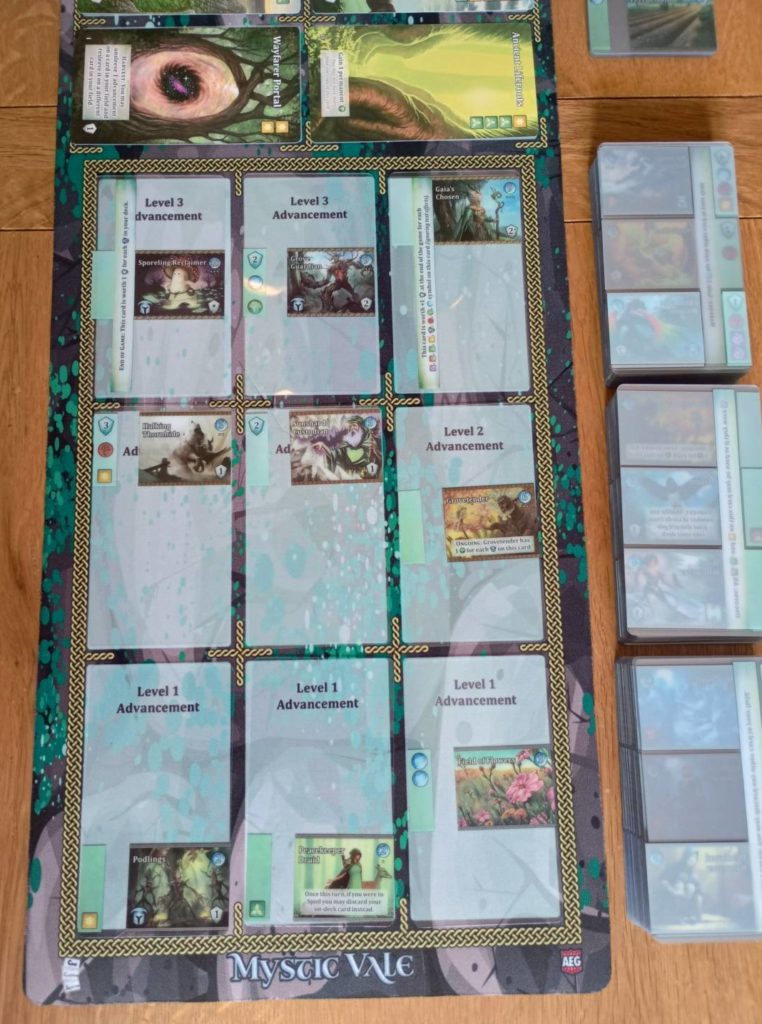
Put it like this, if you’ve hummed and hawed about Mystic Vale, the Essential Edition is the only sensible way to stride into the Vale for the first time. Is it completely flawless? Almost. It won’t win over those not wowed by the Mystic Vale experience, but it builds upon and improves everything that made the base game sing without making a single thing about the experience worse.
In fact, Mystic Vale: Essential Edition might just be the greatest Big Box version of a game ever created.
Hear me out here. It doesn’t cost a huge amount more than the base game (it can be found for around £20 more in the UK at the time of writing) and more than doubles the content, in addition to all the aforementioned gubbins. The production quality is the same high standard as before – not overproduced, just well produced. And the box size is only modestly increased and is now a standard square Ticket to Ride-style box.
So, not overpriced, overproduced or oversized and all that additional content improves the experience whilst barely adding a ripple to the rules overhead or setup and take down time. Tick, tick, tick and tick!
But what does it add?
A good question. Mystic Vale: Essential Edition contains the base game, the first three expansions (Vale of Magic, Vale of the Wild and Mana Storm), a playmat and wooden tokens for the four spirit types.
Let’s cover the simple things first.
The spirit tokens, whilst not strictly necessary, are a godsend in the latter stages of the game when keeping track of the 4 spirit types across multiple cards and purchases proves trying. You can do without but the experience with them is far more agreeable. They’re a case of ‘you don’t realise you need until you’ve got’ and I’m using them from now on.

The neoprene playmat is an inessential and slightly flawed luxury. The card symbol tabs can be a little indistinct against the blandly blueish card areas. The Vale and Advancement cards are aligned at right angles to each other, making reading the markets an exercise in neck craning. There’s also no place for the Fertile Soil cards so they just end up awkwardly in a stack next to the playmat.
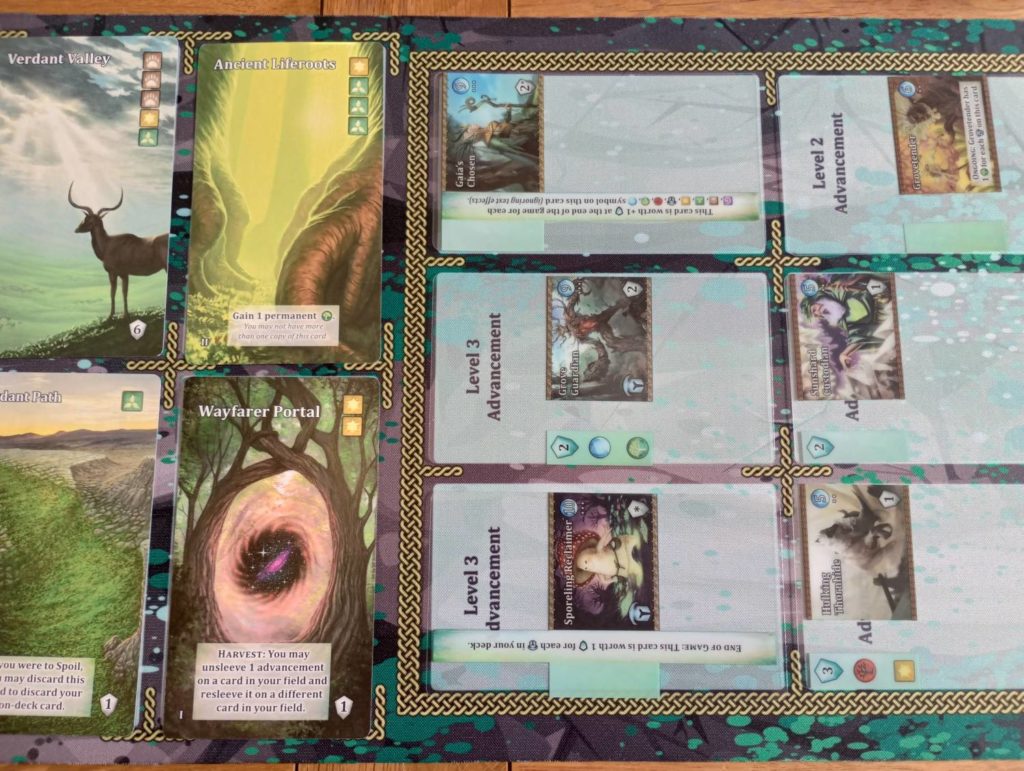
Yet despite these grumbles there’s no denying the tactile pleasure and increased ease in picking a card up from the playmat versus from a table. My neck might have preferred two smaller playmats, one for each card type, but it’s far better than no playmat at all, despite its shortcomings. Again, I’m using it from now on.
And the expansions?
So, onto the real meat of the additional content: Vale of Magic, Vale of the Wild and Mana Storm.
Each adds another dose of cards, bringing the Essential Edition’s total to 252 Advancements and 90 Vale cards, almost tripling the base game’s 96 and 36 cards.
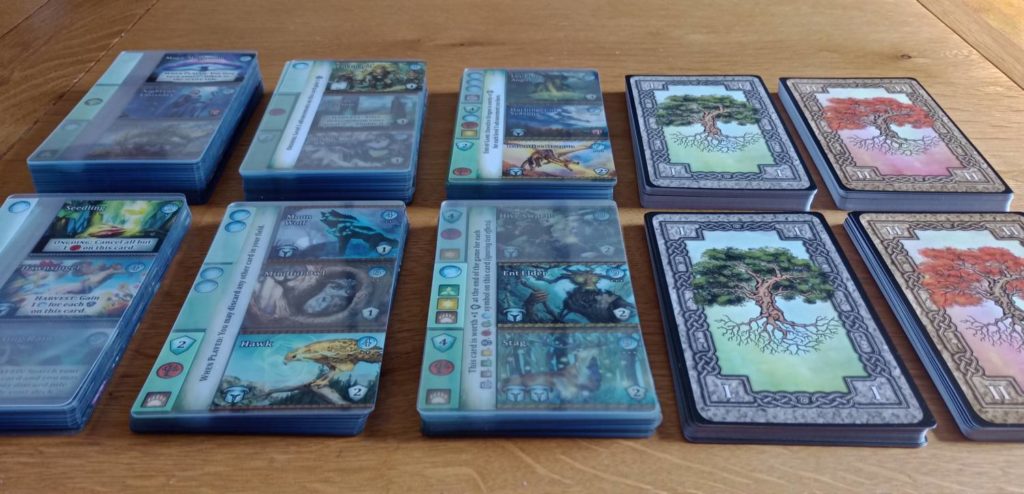
Happily, this influx of cards doesn’t bring a similarly heft rules buff. In fact, there are only two new rules: a negative VP symbol which dents your final score in payment for some powerful options and the Eclipse symbol. Advancements with the Eclipse symbol can be covered with other Advancements, keeping the Eclipse card’s bonus. You might not use them all that often but crafty crafting can lead to some beefy cards, even if they do take an extra turn to create.
As you add the new cards to your games of Mystic Vale you can feel John D. Clair stretching his designer muscles, playing around with subtle ideas that twist and enrich the experience without diluting it. The balance feels right (the Guardians seem better balanced, in fact) and whilst the shuffle of the larger decks can occasionally play a role, it’s no more than with the base game. More to the point, they’re interesting additions, creating a larger and more varied playground to mess about in. Games with everything rolled together can feel quite different from each other.

Included in the Essential Edition are Conclaves – ways of randomising which of the Advancement and Vale cards you use from the full set each game. I know some people with even more Mystic Vale content than what’s included here use the Conclaves but I’ve never tried them and likely never will. Mystic Vale already takes a little more setting up and putting away than is ideal for the length of game it offers. I’m not going to significantly add to that by randomly selecting Conclaves, then wading through the decks to locate the chosen cards and then setting the game up. Especially not when using all the cards together makes for a more interesting game.
I’ve mixed everything together, I enjoy the variety and I’m not going to go through the laborious faff of selecting sets of cards for individual games or separating out the expansions (especially as expansion cards aren’t marked). Life’s too short.
The new cards are one thing, but the expansions bring other novelties too.
The support act is the new Amulets, first seen in Mana Storm. Where before you’d flip your Mana Token if you spoil and then would have one mana point to spend at the market, with the Amulet Tokens your consolation prize is improved. You might get to insert a new card into your field, add a couple of Guardian symbols to a card or a handful of other abilities.

They’re fun to play around with but their relative values peak at different times during the game’s arc. The original Mana Tokens were useful in the early game when a single mana can make a big difference to your purchase options. As your cards grew stronger, that single mana lost its relative worth – who needs one mana when your cards are earning you 15 or more each turn.
In contrast the Amulets come into their own at different points. An Amulet with a single spirit symbol is frequently worthless for the first quarter of the game whereas one with two mana symbols gives a player a distinct early leg up. The Amulets come with positive and negative VP symbols to balance them but it can feel like you’ve been short-changed. What’s worse, they never influence the decision to push your luck a little further, they’re just a lever that happens to be there and is fun to pull every once in a while. Whilst a step too far for newbies, I include them in most games because they’re generally more interesting than the original Mana Tokens.

The headliners are the Leader cards, first found in Vale of the Wild. Players add a different one of these to an empty starting card for a unique ability and the possibility of upgrading them to make them even stronger. Some are more interesting than others but all of them pep up your starting deck and give you the satisfying feeling of doing something your opponents can’t. They might even shave off a couple of turns from the early game, although thankfully they’re not too powerful.
USED. EVERY. SINGLE. GAME.
Honestly, the Leaders are an addition (rather than a replacement) that spices up the sometimes slow early turns. They give players fractionally different starting points to work from, adding interesting decisions, warm feelings of uniqueness and a sense of personality to your deck. It’s just a shame that whilst there’s a nice mix of characters and characteristics, a couple are a little more sexualised than necessary.
A Hearty Venison Stew
Once you’ve delved into the expansions and mixed them in, there’s virtually no fat on Mystic Vale: Essential Edition. Like the meat, this game is lean.

There’s no swapping in and out of content and modules, no faffing about deciding which scenario to use. The box takes up a reasonable amount of space on the shelf and whilst it could have been smaller, there’s space to add in one or two of the larger expansions, something that’s very tempting given the quality of the Essential Edition. Sure, you might choose to leave out the Amulets and ignore the Conclaves but otherwise everything here can be used every session without the game feeling stale. Importantly, every new addition improves the game, creating a deeper and richer experience.
Like I said at the start, it’s a strong contender for greatest Big Box release of all time. The Essential Edition? More like the Definitive Edition. This is how Mystic Vale should be played.


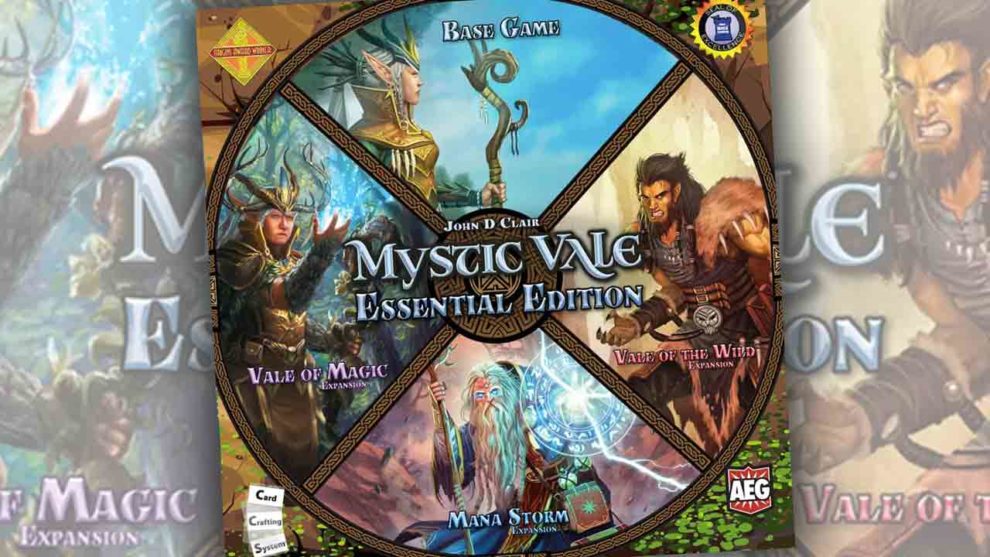

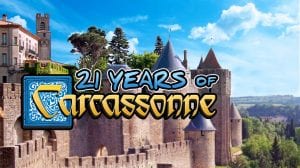

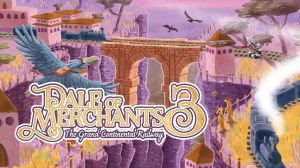





An insightful, entertaining and well-written article on Meeple Mountain? That’s what I expect and why I cherish this site. Thanks, Andrew!
Aw, thanks Joshua, so pleased you enjoyed the article! 🙂